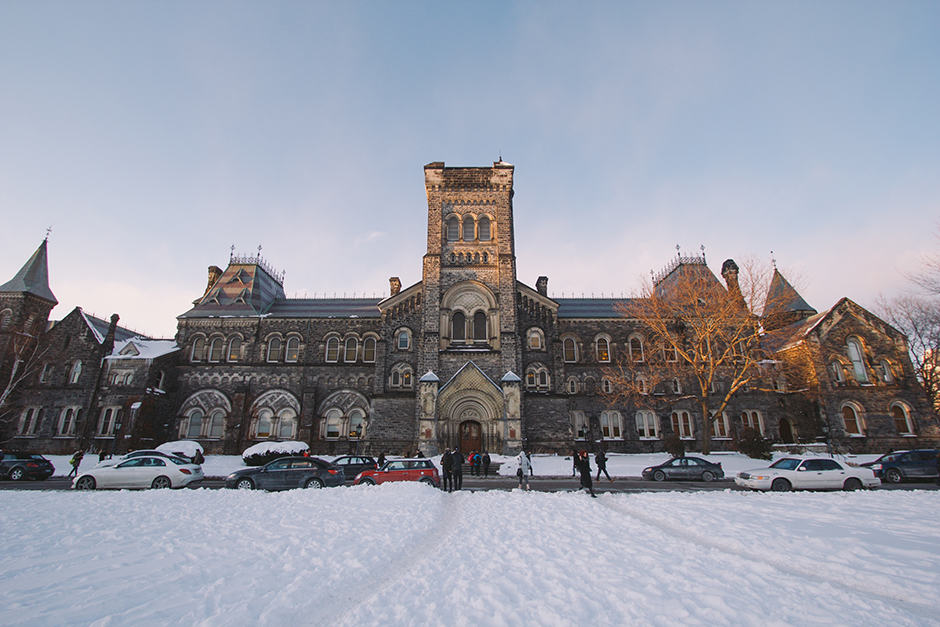A report presented to the university administration has put forth principles and recommendations for the revitalization of the historic centre of the University of Toronto St. George campus — namely Front Campus, Hart House Circle, the Sir Daniel Wilson Quadrangle, and Back Campus.
The recommendations include the removal of surface parking in the historic core of the campus, and the prioritization of accommodation for pedestrians and bicycle traffic to improve through-traffic in the area.
The Landmark Committee, co-chaired by Donald Ainslie, principal of University College, and Scott Mabury, U of T’s vice-president, university operations, are behind the recommendations.
At a University Affairs Board meeting on February 3, Mabury described the project as his “most important” of his career.
“The cars parked around the most iconic landscapes on campus must be relocated, vehicular circulation tamed, and the pedestrian environment and amenity support strengthened,” the vision statement for the project reads.
In evaluating the space, the committee found that student uses of the space and memorable events, such as convocation, are the most important aspects of the area. The committee proposed their recommendations along the lines of improving those experiences.
“The ability to pedestrianize all of this…will alter the experience for everybody at the university,” said Ainslie at a Business Board Meeting on January 26, referring to the recommendations of the report, adding, “This project is not just what’s green out there, it’s how that green area connects to all the locations on campus.”
The report also identifies certain traffic pressures faced by pedestrians in the area. “There remain sidewalks that lack continuity and that are too narrow to accommodate the pedestrian population, or conflict with vehicular movement,” it reads.
The report recognizes that the shortage of sidewalks meant that pedestrians are “forced to intermingle with vehicular traffic.”
While the removal of surface parking will shift the focus to pedestrian traffic, vehicles will still be able to drop off and pick up passengers, as well as service buildings.
One caveat that has to be addressed by the firm contracted is where the parking will go. According to the Section 310(b), Clause 1 of the City of Toronto By-law No. 1997-0275, the university is required to have at least 1,930 parking spaces on the St George campus.
The removal of surface parking from the core will make it non-compliant with the by-law, unless they replace the parking space lost.
With regards to how the firms will be addressing this problem, Mabury has described the committee as “agnostic” to the methods.
Another significant recommendation is the pedestrianization of the space in front of Convocation Hall. “The other big change that we’re proposing is taking care of this space in front of Con Hall,” Ainslie said. “At the moment, classes in Con Hall [of] 1400 students leave into a road and it can be pretty hairy sometimes.”
The committee also hopes that the project will receive support from the wider U of T community, with funding coming through a fundraising campaign.
“We are launching a public consultation project process that will be wider and deeper than any other we’ve done around any individual capital project,” Mabury says.
The committee expects to engage the university community and the city in raising support for the project.
The committee also recommends that the university engage consultants to prepare a plan that fits the principles outlined in the report.
The committee will be putting out calls for consulting firms to propose plans for the revitalization. From the submitted proposals, a few will be shortlisted.
A plan is expected to be approved by summer 2015.


